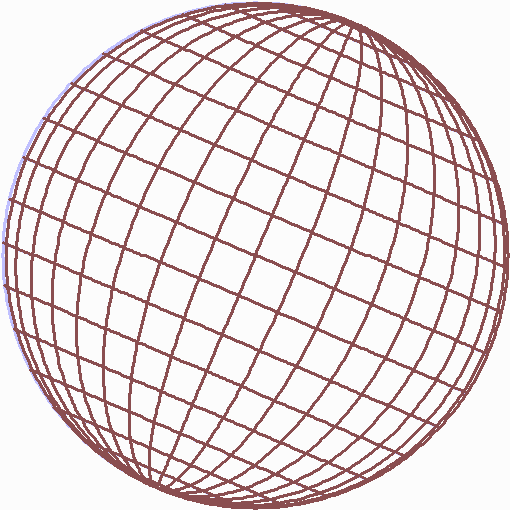Photo: Tenille Campbell
Transcript
[Sung]
ᐅᑳᐄᐧᒫᐤ
ᑭᒫᒪᐃᐧ
ᐱᒧᐦᑌᓇᐤ
ᓇᓈᐢᑯᒧᓇᐣ
ᑮᕀ ᐃᓯᐁᐧᐸᐠ
ᑲᓈᑎᒪᑎᓇᐣ
ᐁ ᓴᑭᐦᐃᑕᐠ
ᑕᐦᑐᑮᓯᑳᐤ
ᐅᑳᐄᐧᒫᐤ
ᐱᒫᑎᓯᐃᐧᐣ
ᑭᒫᒪᐃᐧ
ᐃᐧᑕᐱᓱᒥᑕᓇᐤ
[Translation]
(oh) great mother
all together
we walk with (and on) you
we thank you.
(as) the weather changes now
we will protect you
(because) we love you—every day.
(oh) great mother
(because of your) life force
we are all together
tied as one.
[Spoken]
Greetings,
I am sounding out to you today from Treaty Six lands, the ancestral place of nêhiyaw, nêhithaw, Nahkawe, and Dakota people, and the homelands of the Métis, Halfbreeds êkwa otipêyimisowak. It is important to acknowledge this, as it is imperative that culture, ceremonies, and traditions continue to be enacted seasonally and annually as they have since time immemorial for the purpose of right relations with all of creation.
Today I want to remind us that we are all part of a magnificent ecosystem that is okâwîmâw—our Mother Earth. One of the teachings of miyoh pimâtisin—the life-force—that I’ve learned is that there are four lessons of the land: the grasses, the trees, the animals, and the rocks. The grasses show us kindness and humility because they bind and wrap the soil to protect and give shape to the Earth. The trees illustrate truth and balance as they grow upright, holding their heads up toward the sun. Animals teach us compassion and how to share as they give us their lives for our own sustenance. And rocks: they teach us strength and determination because of their resilience.
Like these beings, these teachings of the life-force all have roots. We all do! My ancestors have always guided and nurtured my growth. Surely, you’ve heard the saying “if you don’t know where you came from, how will you know where you’re going?” The root is the strongest part of the medicine. They grow deep into soil and anchor plants, absorbing nutrients and abundance still deep in Mother Earth. Like all of us, they come in different forms—some roots even run thin and shallow, drinking in water and holding the soil in place. And some even reach up to the sky. Honour the way your roots grew to get you here today. They will teach you much of who you are, and why you are, and what your contribution is. Honour and grow strong roots for the generations yet to come.
Sometimes we may envy the tall and mighty trees, the ones who know no glass ceiling, the ones we call legendary. With a strong foundation you, too, can hold your head up and grow tall. A healthy ecosystem is a multitude of life forces. So love yourself. Be fulfilled in your meadow flower-ness, your mossiness, your grassiness, your rockiness, your wild animal-ness. We are all related.
The languages we speak all have roots—sounds deeply connected to place—and their meanings shift and have meaning added based on the “routes” they’ve travelled and the stories they’ve shaped.
Meaning is sensually and sensorially rooted in the body, and without this embodied connection, language too, would wither and die. Know that, like the monoculture of English I am transmitting today, it is suppressing the resonances of the languages of this land. Every time we utter a sound or speak a word from an Indigenous language, the spirit of the language lives and Mother Earth listens. So, learn the Indigenous sounds of the land where you live. Meditate on these sounds that rise up and still emanate, resonate, and have deep-rooted meanings as we walk together on our Mother Earth.
Music also has roots and is about roots. The primary tone in a song usually starts and returns there, as it helps both the musician and the listener remember how to get home. My idea of harmony and balance is where, through song, we are instructed how to act and interact with each other, with all living beings, and importantly, with our Mother Earth. The birds show us this every morning.
So, wake up and dig deep. We all have a job to do!
[Sung]
ᐊᐧᓂᐢᑲ ᐯ ᐋᐧᐸᐣ ᐆᒪ
ᐋᓴᕀ ᐲᔦᓰᓴᐠ ᓂᑲᒧᐊᐧᐠ
ᐯ ᒥᔪᐦᑖᑲᐧᐣ ᑭᑕᐢᑮᓇᐤ
[Translation]
wake up, the dawn is here
already birds sing
come and see how good our land sounds
“A healthy ecosystem is a multitude of life forces. So love yourself. Be fulfilled in your meadow flower-ness, your mossiness, your grassiness, your rockiness, your wild animal-ness. We are all related.”
Cheryl L’Hirondelle shares Cree songs and teachings on strength, pride, and interdependence. Through song and speech, L’Hirondelle also affirms the rootedness of languages in the territories from which they emerge: her transmission eloquently shows the inseparability of culture and environment.
Cheryl L’Hirondelle (Cree/Halfbreed; German/Polish) is an interdisciplinary artist, singer/songwriter and critical thinker whose family roots are from Papaschase First Nation, amiskwaciy wâskahikan (Edmonton, AB) and Kikino Metis Settlement, AB. Her work investigates and articulates a dynamism of nêhiyawin (Cree worldview) in contemporary time-place, incorporating Indigenous language(s), audio, video, VR, olfactory, sewn objects, music, and audience/user participation to create immersive environments towards “radical inclusion.” As a songwriter, L’Hirondelle’s focus is on both sharing nêhiyawêwin (Cree language) and Indigenous and contemporary song-forms, and personal narrative songwriting as methodologies toward survivance.
She is the recent recipient the 2021 Governor General’s Award in Visual and Media Art. In addition, Cheryl was awarded two imagineNATIVE New Media Awards (2005 & 2006), and two Canadian Aboriginal Music Awards (2006 & 2007), and has been nominated for or received honorable mention for various other arts and music awards. Her work has been published, written about, exhibited, performed, and presented regionally, nationally, and internationally. L’Hirondelle holds a Master of Design from OCAD University’s Inclusive Design program (2015) and is a current member of the university’s Indigenous Education Council. She is currently a PhD candidate with SMARTlab at University College, Dublin, in Ireland.
ASL Interpretation
ASL Interpretation by Canadian Hearing Services.

